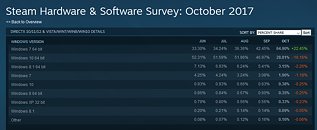
ROCCAT's First-Ever VR Game Debuts on Steam at $8
At last, the long wait is over. The best Virtual Reality game of Gamescom 2017, according to Elite Gamer, is now available on Steam. Elevator… to the Moon! takes players on a wild ride in a dilapidated lunar elevator. Players are tasked to fix their odd space vehicle while off-kilter and loudmouthed president of the world, Doug-Slater Roccmeier yells at them for not following every instruction to the point. Take the trip to its end, where dark and horrible mysteries on the moon are just waiting to be uncovered. Elevator… to the Moon! is no one trick pony. After you've finished the storyline, there is a perplexing alternate ending to experience, many achievements to unlock and fun little secrets to be discovered. As you can see, there is enough action going on to satisfy your lust for entertainment for quite a while.


























































































